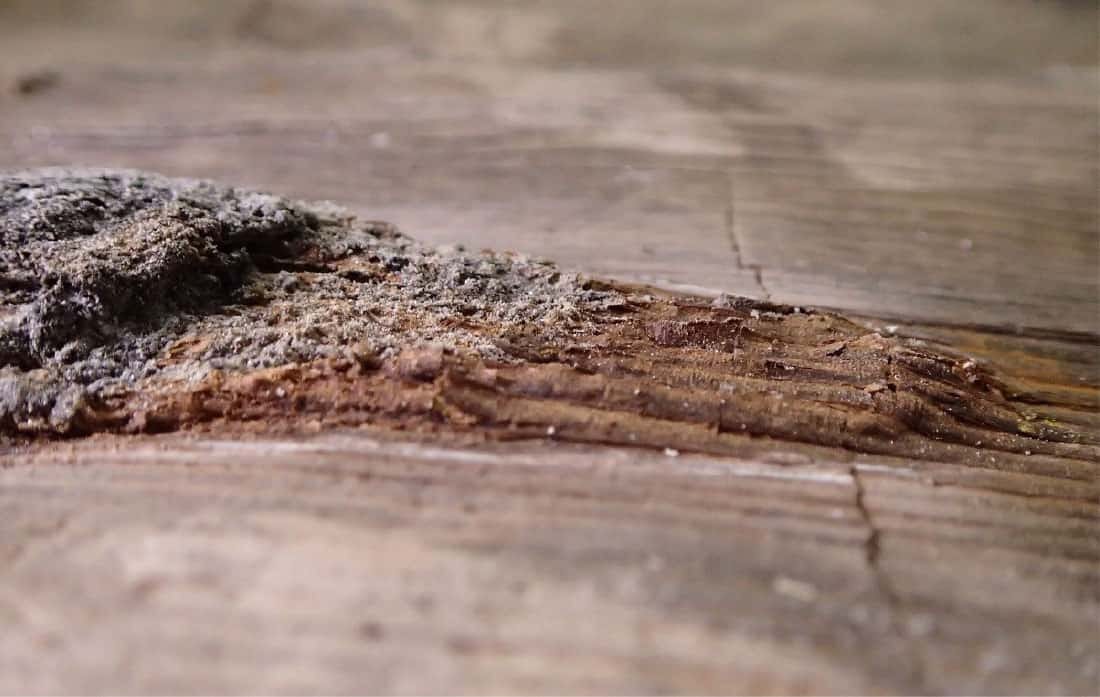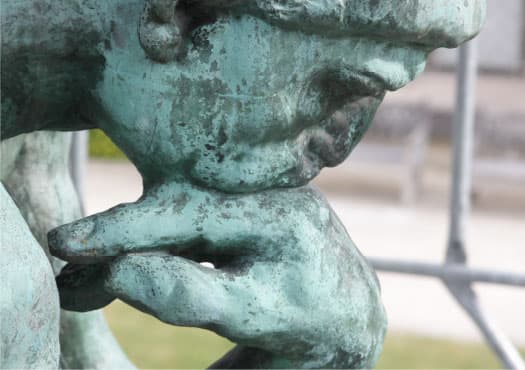
Treating and curing
Preserving the vestiges of the past
CONSERVING AND CONSOLIDATING
A general distinction is made between: archaeological woods which come from the soil and which may have escaped attack by insects and wood-eating fungi, owing to the anaerobic environment, but which have nonetheless undergone bacterial attack with the disappearance to varying extents of the cellulose present; and historical woods, which have been protected from the external climatic conditions, but which could have suffered from fungal attack (rot) or wood-boring insects (woodworm, lyctus, capricorn beetle, termites, etc.). In any case, the main purpose of the conservation treatments is to consolidate the weakened structure of the ancient woods. The basic principle is to use the wood’s natural porosity, especially when it is altered, to inject resins which, in solidifying, will give the wood improved mechanical properties.
If the wood is dry, acrylic resins are used, such as Paraloïd B72®, dissolved in an organic solvent (acetone) to partially consolidate the areas close to the surface of the wood, usually with a brush. For more significant consolidations, epoxy resin will be injected locally with a syringe. However, for very severe degradation altering the entire volume of the object, we are obliged to use a more invasive and irreversible consolidation technique with a radiation-polymerised resin: this is the “Nucléart”. process. This technique, developed by ARC-Nucléart in the 70s, consists in impregnating the entire volume of the object by two-stage autoclaving process: creation of a vacuum to outgas the wood, followed by pressurisation of the wood immersed in a styrene-polyester resin, to impregnate it to the core. Following impregnation, the object is wiped and then irradiated with gamma rays to initiate polymerisation and hardening of the resin in place in the wood.
Archaeological wood nearly always reaches ARC-Nucléart wet. For consolidation, we generally use a resin of the polyethylene glycol (PEG) family, which has the merit of being solid at ambient temperature and soluble in water, allowing impregnation of the wood by immersion in aqueous solutions containing 30-35% PEG by mass. In addition to consolidation, a drying operation is also often necessary. Unfortunately, the heavily degraded archaeological woods which have lost a good share of their cellulose are not able to withstand drying in air: the cell walls have been so eroded by bacterial attack that they have lost their initial rigidity. Consequently, if drying in air is carried out, the capillary forces exerted by the water on the softened walls would lead to generalised cell collapse in the wood, liable to cause deformation and a loss of volume of more than 50%! To avoid this disastrous scenario, specialist workshops dry archaeological waterlogged woods by vacuum freeze-drying. With this process, there is no longer any liquid phase water in the wood after freezing, with drying taking place by sublimation of the water, with no deformation of the wood. Unlike the “Nucléart” process, the PEG/freeze-drying process (PEG-LYO) is reversible because no chemical reaction takes place during the treatment: one simply dissolves the PEG in water to transport it into the wood.
For composite archaeological woods containing mineral or metal concretions sensitive to humidity, it is possible to use the “mixedNucléart” process, because the styrene-polyester resin is particularly hydrophobic. We begin by very partially consolidating and drying the wood with PEG-LYO method and then apply the “Nucléart” process to consolidate it significantly, while making the material less susceptible to humidity. n
 More (2 min.)
More (2 min.)
Some of the wooden remains discovered by archaeologists are partially mineralised while buried, owing to the combined presence of iron corrosion products (composite iron/wood objects) and the activity of certain bacterial populations in the soil, such as sulphate-reducing bacteria. It is therefore common to retrieve wooden objects contaminated by unstable salts such as iron sulphides, of which pyrite (FeS2) is the best-known representative. These salts can eventually become much-feared degradation agents for wood once dried by the PEG‐LYO method, notably in environments that are slightly too humid. Sulphides tend to transform spontaneously in the open air into sulphuric acid and create a pH of close to 2 in the contaminated zones of the wood. This intense, humid acidification, which propagates like a wave in the volume of the dry wood, speeds up the decomposition of the polymers making up the wood, which are already significantly altered by time.
To address this problem, which concerns a non-negligible part of the composite archaeological wood collections, ARC-Nucléart is developing specific treatment protocols for the various situations, thanks to several research programmes since 2012: remedial treatment of wood contaminated by pyrite, already consolidated and dry, in the process of acidification and a preventive treatment by chemical extraction from the wood, in an aqueous solution, which can be carried out prior to impregnation with PEG and drying.

Pyrite efflorescence in the process of oxidation on an archaeological wood - © ARC-Nucléart.
Glossary
Anaerobic environment environment containing no oxygen (O2)

Treating and curing

Conserving and consolidating

Analysis and restoration